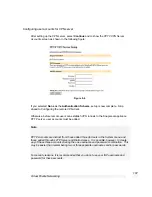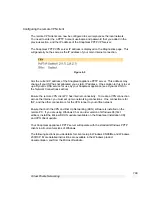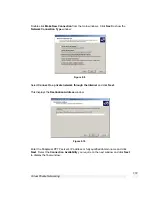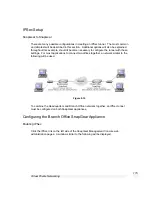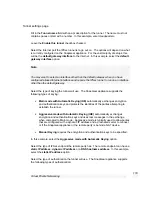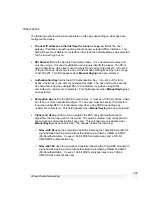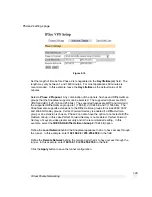
Virtual Private Networking
121
Note
This option will not be available when the SnapGear appliance has a static IP address
and the remote party has a dynamic IP address.
Enter the
Required Endpoint ID
of the SnapGear. This ID is used to authenticate the
SnapGear appliance to the remote party. It is required because the SnapGear appliance
in this example has a dynamic IP address. This field will also be required if RSA Digital
Signatures are used for authentication.
It becomes optional if the SnapGear appliance has a static IP address and is using
Preshared Secrets for authentication. If it is optional and the field is left blank, the
Endpoint ID
defaults to the static IP address. If the remote party is a SnapGear
appliance, the ID must have the form
abcd@efgh
. If the remote party is not a SnapGear
appliance, refer the interoperability documents on the SnapGear knowledge base web
site (
http://www.snapgear.com/knowledgebase.html
) to determine what form it must take.
In this example, enter:
branch@office
Leave the
Enable IP Payload Compression
checkbox unchecked. If compression is
selected,
IPComp
compression is applied before encryption.
Check the
Enable Dead Peer Detection
checkbox. This allows the tunnel to be
restarted if the remote party stops responding. This option is only used if the remote
party supports Dead Peer Detection. It operates by sending notifications and waiting for
acknowledgements.
Enter the
Delay
and
Timeout
values for Dead Peer Detection. The default times for the
delay and timeout options are 9 and 30 seconds respectively. This means that a Dead
Peer Detection notification will be sent every 9 seconds (
Delay
) and if no response is
received in 30 seconds (
Timeout
) then the SnapGear appliance will attempt to restart the
tunnel. In this example, leave the delay and timeout as their default values.
Leave the
Enable Phase 1 & 2 rekeying to be initiated from my end
checkbox
checked. This enables automatic renegotiation of the tunnel when the keys are about to
expire.
Click the
Continue
button to configure the
Remote Endpoint Settings
.

